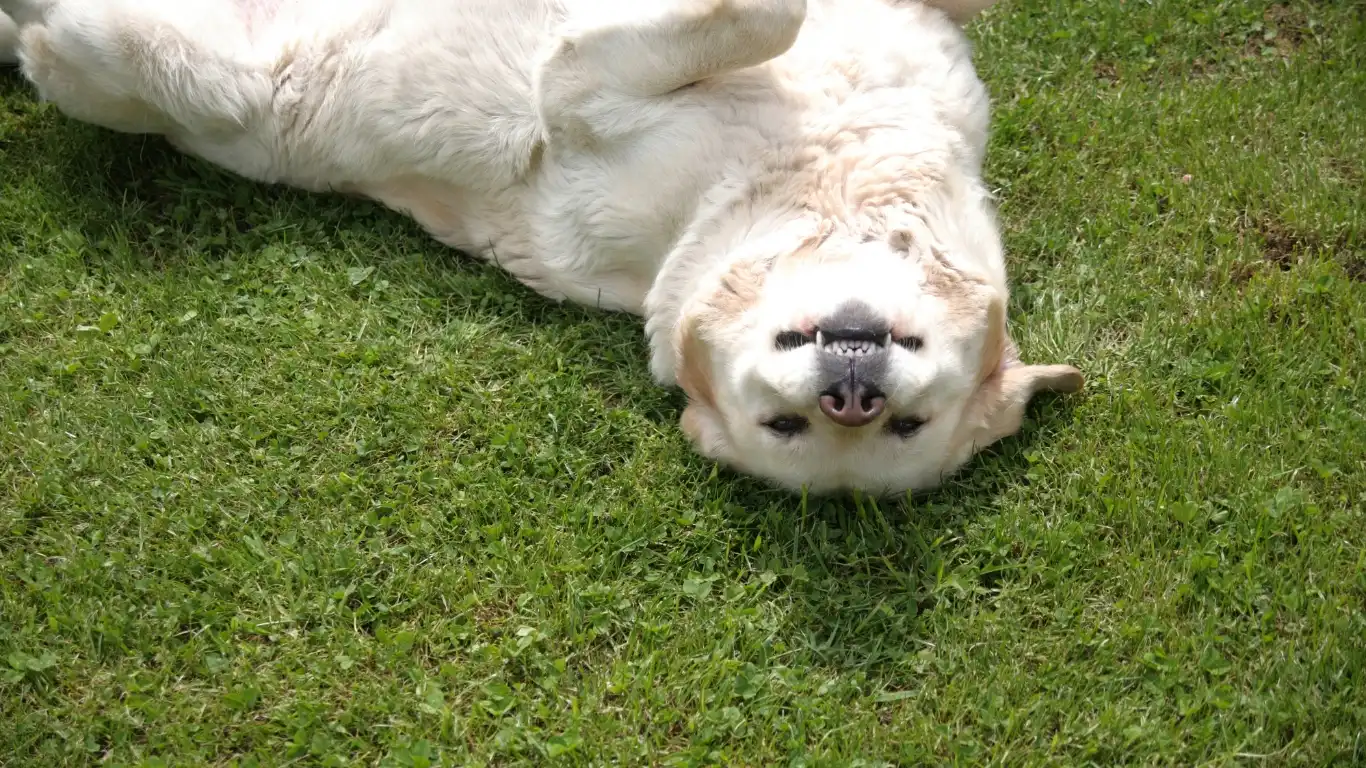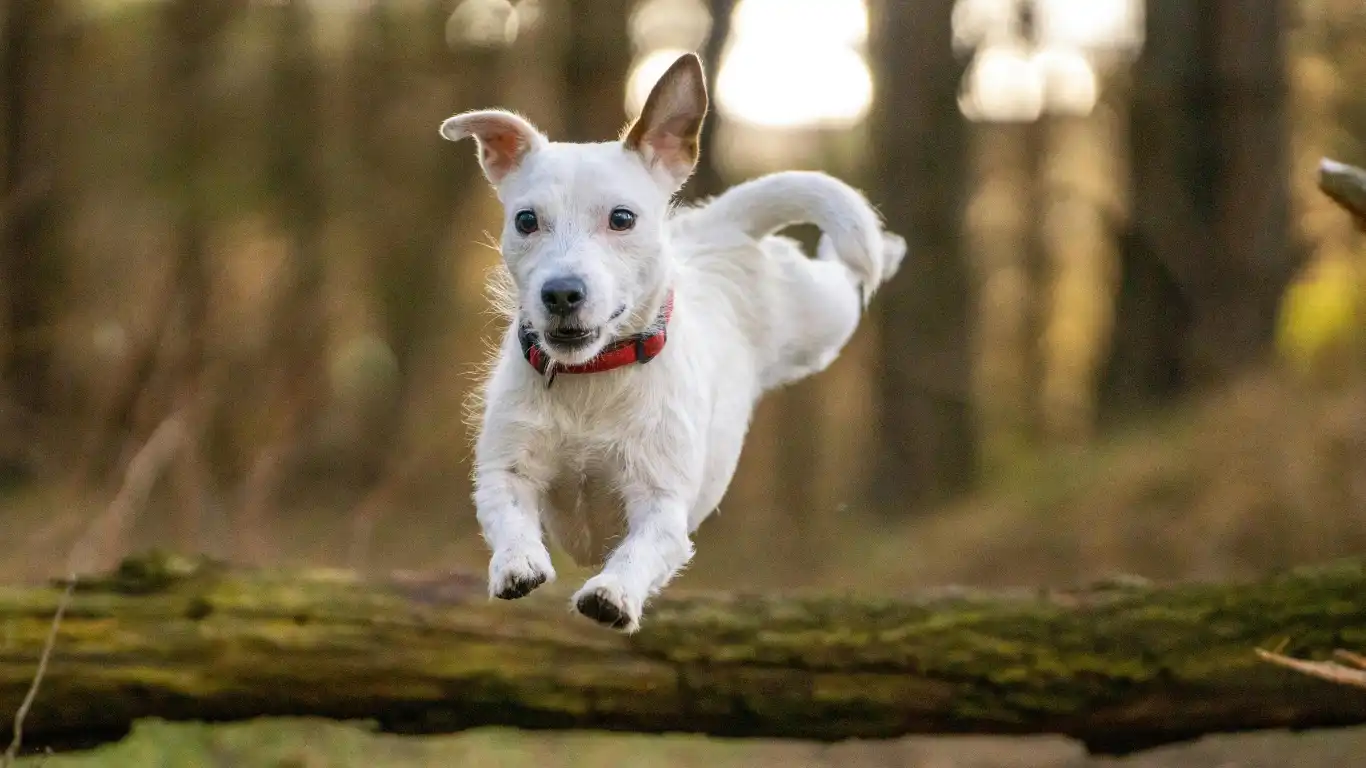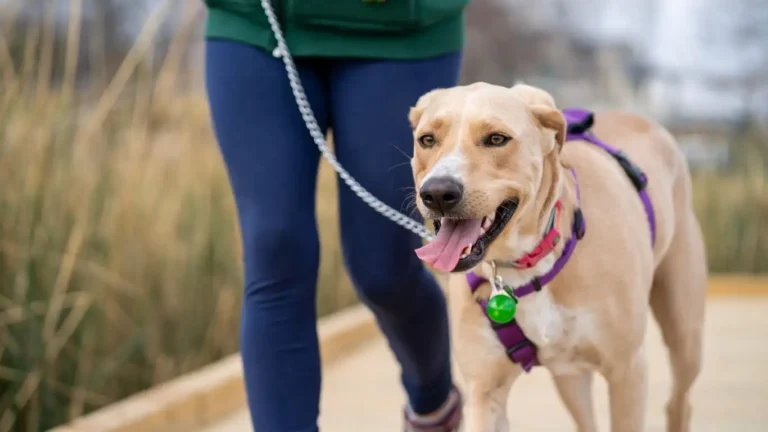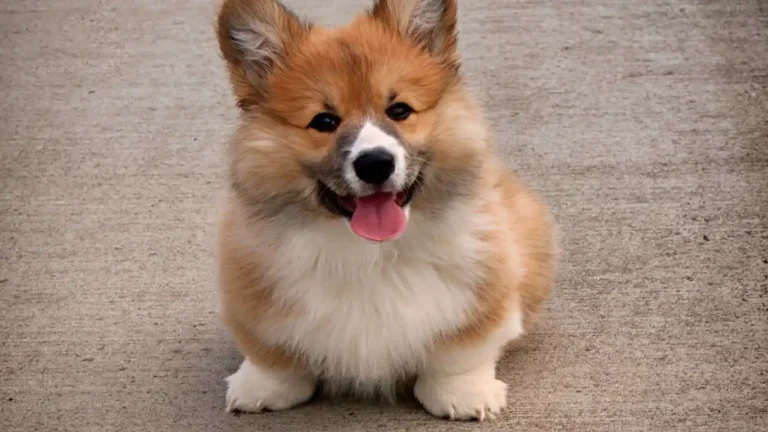How to Stop a Dog From Digging in the Yard: Proven Solutions
As a pet nutritionist and pet care expert working closely with veterinary clinics, I’ve had the chance to see many dogs struggle with a common but frustrating behavior: digging. Whether your dog is digging holes in your garden, turning over your flower beds, or creating massive craters in the yard, this behavior can be stressful for both you and your pet. It’s not just about keeping your yard looking neat—digging can sometimes be a sign of an underlying issue that needs to be addressed. So, the question remains: how to stop a dog from digging in the yard?
Understanding the Root Causes of Digging
Before we dive into solutions, it’s important to understand why dogs dig in the first place. As a dog owner and someone who works with pets daily, I can tell you that dogs don’t just dig for fun or because they’re being naughty. There are several reasons that could explain this behavior.
Instinctual Behavior
Dogs have a natural instinct to dig. This behavior traces back to their wild ancestors, who dug to create a safe and comfortable space to sleep, hunt, or store food. Even domesticated dogs, with all their comforts and treats, can feel the urge to dig as part of their inherited instincts. For example, breeds like terriers are especially known for their digging habits. They were originally bred to burrow into the ground after small animals.
Seeking Comfort or Shelter
Another reason dogs dig is to create a cooler or warmer place to rest. On hot days, digging helps dogs create a cooler spot to lie down by uncovering cooler soil beneath the surface. On the flip side, in colder weather, dogs may dig in search of warmth or to make a more comfortable spot in a hard or rocky surface. If you notice your dog digging when the weather changes, this could be their way of trying to regulate their temperature.

Behavioral Reasons Behind Digging
While instinctual and environmental factors are important, a dog’s behavior also plays a huge role in why they dig. Understanding these behavioral factors can help you target the root cause of the issue.
Attention-Seeking Behavior
Sometimes, dogs dig simply because they want attention. As someone who’s worked with both dogs and their owners for years, I’ve seen many cases where the dog digs when it feels neglected or under-stimulated. If you’re out in the yard or garden, and your dog sees that digging gets your attention, they may continue doing it as a way to connect with you, even if that attention is negative. Dogs are pretty smart like that—they know that digging will cause you to react, and to them, that reaction is a form of interaction.
Separation Anxiety and Stress
If your dog digs when you’re not around, it could be a sign of separation anxiety. Dogs that feel anxious or stressed when left alone may dig in an attempt to escape or find something that comforts them. This type of digging often happens around fences or doors where they can sense that you’re on the other side. It’s important to note that dogs with separation anxiety may also engage in other destructive behaviors, such as chewing furniture or barking excessively.

Digging as a Result of Boredom
One of the most common reasons I’ve encountered for digging is pure boredom. Dogs are intelligent animals that need regular stimulation, both physical and mental. When they don’t get enough exercise or playtime, they’ll often resort to undesirable behaviors, such as digging. It’s their way of releasing pent-up energy and frustration. This is especially true for high-energy breeds that need a lot of activity. If your dog is not getting enough time outdoors, enough play, or enough mental stimulation, they may dig to entertain themselves.
How to Spot Boredom Digging
Do you notice your dog digging more frequently when you haven’t had a chance to take them for a walk or play fetch? If so, this could be a sign of boredom. Typically, boredom digging occurs in specific areas, like near the door or your favorite garden spots, and is often accompanied by signs of frustration, such as pacing or whining.
Digging Due to Hunger or Desire to Escape
Sometimes, a dog’s digging behavior can be a result of hunger or the desire to escape. If your dog is constantly digging near the food area, this could indicate that they’re not being fed enough or that they’re searching for food. Other times, dogs dig to try and escape the yard in search of something more exciting, like a nearby street, animals, or even another dog. I’ve worked with a few cases where dogs dug out because they were bored of their current environment and wanted to explore. If you’ve noticed that your dog is digging near the fence line or gate, this is worth investigating further.

How to Stop a Dog From Digging in the Yard
Now that we have a good understanding of why dogs dig, let’s dive into some practical solutions for how to stop a dog from digging in the yard. It’s important to remember that correcting this behavior requires patience, consistency, and a bit of creativity. The first step is identifying the root cause of the digging, which can vary from dog to dog. Let’s look at some actionable steps you can take to address the issue.
Effective Ways to Stop Your Dog From Digging
Now that we’ve identified some of the reasons your dog might be digging in the yard, it’s time to take action. The good news is that most cases of digging can be solved with a little creativity, consistency, and understanding of your dog’s needs. As someone who has worked closely with both pets and pet owners, I’ve seen how effective the following strategies can be in curbing this behavior. So, let’s break down some practical solutions to help stop your dog from digging in the yard!
1. Increase Physical Exercise and Mental Stimulation
As mentioned earlier, boredom and pent-up energy are major causes of digging. Dogs need regular exercise, and if they’re not getting enough of it, they may resort to digging as a way to burn off excess energy. This is especially true for high-energy breeds like Border Collies, Labradors, and German Shepherds.
When I work with pet owners, one of the first suggestions I make is to amp up their dog’s daily exercise routine. A long walk, a game of fetch, or a fun agility course can go a long way in tiring your dog out. Not only does this prevent them from feeling bored, but it also strengthens the bond between you and your dog. A well-exercised dog is a happy dog!
Additionally, dogs need mental stimulation just as much as physical exercise. If your dog is mentally challenged through interactive toys, puzzle feeders, or basic training sessions, they’ll be less likely to engage in destructive behaviors like digging. I personally love recommending treat-dispensing toys or hide-and-seek games to keep dogs engaged and their minds active.

2. Provide a Safe and Comfortable Resting Area
If your dog is digging to create a more comfortable resting area, providing them with a designated spot to relax can make a huge difference. Dogs love having a cozy, cool, or warm place to settle in, so give them a comfy dog bed or a shaded area where they can retreat to. In my experience, I’ve seen that dogs who have a comfortable place to relax are less likely to dig in search of a more suitable resting spot.
Another tip is to make sure your dog has access to fresh water throughout the day. Dehydration can lead to discomfort, and your dog may dig in an attempt to cool down. Providing a designated shaded spot with a cooling mat can also help your dog stay comfortable during warmer months.
3. Set Up a Digging Pit
Sometimes, the best way to stop your dog from digging is to give them a designated space where they can dig to their heart’s content. This might sound strange, but it works! I’ve helped many owners set up a “digging pit” in their backyard as an outlet for their dog’s natural digging instinct. All you need is a small section of the yard where you bury some toys or treats to encourage digging.
To create a digging pit, follow these steps:
- Choose a section of your yard where you don’t mind a bit of digging.
- Dig a small, shallow pit and bury a few of your dog’s favorite toys or treats inside.
- Encourage your dog to dig by pointing out the toys or treats.
- Whenever your dog digs in the pit, praise them and give them a treat to reinforce the behavior.
This will allow your dog to express their natural digging behavior without damaging your garden or lawn. The key here is consistency—if you catch your dog digging elsewhere, redirect them to the pit. Over time, they’ll learn where it’s okay to dig and where it’s not.
Addressing Separation Anxiety and Stress
If your dog’s digging is related to anxiety or stress, particularly separation anxiety, this behavior can be a bit trickier to manage. In these cases, simply providing more exercise may not be enough. As a pet nutritionist and care expert, I’ve worked with owners whose dogs dig because they’re stressed when left alone. If this sounds like your dog, there are several approaches you can try.
4. Gradual Desensitization
One of the most effective ways to address separation anxiety is through gradual desensitization. This technique involves slowly getting your dog used to being alone. Start by leaving them alone for short periods of time and gradually increase the duration. The goal is to help your dog feel more comfortable being left alone and reduce the anxiety that triggers their digging behavior.
As part of this process, make sure your dog has plenty of enrichment toys to keep them occupied while you’re away. Puzzle toys, treat-dispensing balls, or even a frozen Kong filled with peanut butter can help distract your dog and keep their mind off the fact that you’re not there.
5. Use Anxiety-Reducing Products
For dogs with severe separation anxiety, you might want to consider anxiety-reducing products. Things like calming collars, pheromone diffusers, or even CBD-infused treats can help relax your dog when they’re left alone. In my experience, these products can be quite effective when used in combination with behavior training and exercise. It’s always important to consult with your veterinarian before using any of these products to ensure they’re safe for your dog’s health.

6. Secure Your Yard to Prevent Escaping
If your dog is digging in an attempt to escape, the first step is to secure your yard. This may mean reinforcing the fence, digging a trench along the bottom of the fence, or installing a privacy barrier to prevent your dog from seeing or hearing things that trigger their escape attempts. I’ve seen dogs dig under fences to escape in search of food, another dog, or simply to explore, so securing the boundaries of your yard is key.
Make sure your fence is tall enough to prevent jumping or climbing, and if your dog is particularly determined, consider burying chicken wire or adding rocks at the base of the fence to discourage digging underneath it. It’s a little extra effort, but it’s worth it to keep your dog safe and prevent future escape attempts.

Training and Redirecting Digging Behavior
Training your dog to stop digging involves redirecting their energy and reinforcing positive behaviors. Instead of punishing your dog for digging, redirect them to a more appropriate activity. For instance, if you catch your dog digging, try calling them over to play fetch or give them a puzzle toy to engage with.
Consistency is key when it comes to training. If you consistently reward positive behaviors and gently redirect unwanted behaviors, your dog will begin to understand what’s expected of them. It’s a slow process, but with patience, you’ll see improvement.
Patience and Consistency Are Key
As I’ve mentioned before, when it comes to stopping your dog from digging, patience is crucial. As a pet care expert, I’ve seen countless situations where dogs struggle with digging, and I always tell pet owners that consistency is the key. Whether your dog’s digging is instinctual, anxiety-driven, or just plain boredom, it’s going to take time and effort to change their behavior.
When you begin working on stopping digging, don’t expect an overnight transformation. Dogs, just like people, learn at their own pace. So, the best advice I can give you is to stay consistent with the methods we’ve discussed, keep a positive attitude, and most importantly, be patient with your furry friend. They’ll get there!
Along the way, remember to reinforce good behavior. Every time your dog digs in their designated digging pit instead of your garden, or when they stay calm during your absence, reward them with praise, treats, or a fun game. This positive reinforcement strengthens the behavior you want to see, and your dog will start to realize what’s acceptable and what’s not.
Seeking Professional Help When Needed
There are times when, despite all your efforts, your dog’s digging behavior doesn’t improve. If you find that you’re struggling to make progress, it might be a good idea to seek professional help. Sometimes digging can be a sign of deeper behavioral or medical issues that need expert attention.
As someone who’s worked in veterinary clinics, I’ve seen how certain health problems, such as skin irritation, joint pain, or even gastrointestinal issues, can cause a dog to dig. If your dog seems to be digging excessively, especially if accompanied by other symptoms like excessive licking or discomfort, it’s always a good idea to consult your veterinarian. They can rule out any medical causes and guide you toward the most appropriate solution.
If you suspect the digging behavior is purely behavioral and you haven’t had much luck with training, working with a professional dog trainer or a behaviorist can also help. These experts can assess your dog’s behavior and offer personalized solutions tailored to your dog’s unique needs. In my experience, sometimes all it takes is a few sessions with a professional trainer to see a noticeable improvement.
Using Positive Reinforcement for Training
One of the most effective techniques I’ve found for training dogs to stop digging is positive reinforcement. This involves rewarding your dog for exhibiting the behaviors you want to see, instead of punishing them for digging. As someone who’s seen dogs respond well to this method, I can tell you it works wonders in shaping long-term behavior.
For example, let’s say your dog begins digging in a part of the yard they shouldn’t. Instead of scolding them, you can redirect them to an acceptable behavior, such as playing with a toy or walking on a leash. When they focus on the toy or play, praise them, and offer treats. Gradually, your dog will begin to associate good things with the right behavior and learn to avoid digging.
With positive reinforcement, it’s important to catch your dog in the act of doing something right. The sooner you reward them for redirecting their energy to something positive, the better. Timing is everything in dog training!

Managing Your Yard and Garden to Prevent Digging
If your dog is persistent in digging, it’s essential to take steps to manage your yard or garden environment to prevent damage. As a pet care professional, I always advise owners to create a dog-friendly space that meets both your needs and your dog’s natural instincts. A safe and secure environment plays a big part in preventing unwanted behaviors like digging.
1. Install Barriers and Boundaries
Start by reinforcing the boundaries of your yard. This might mean adding higher fences, securing gaps, or installing solid barriers that block your dog’s view of outside distractions. Sometimes, just making sure your dog cannot see or smell something exciting on the other side of the fence can eliminate the desire to dig in search of an escape route.
If your dog is trying to dig under the fence, one solution is to bury wire mesh or a special dig-proof barrier beneath the ground. This can help stop them from digging their way out. It’s an investment, but it’s worth it to keep your dog safe while still enjoying the outdoor space.
2. Create a Dig-Friendly Zone
Another great solution is to create a designated digging area, such as a sandbox or a garden plot. Encourage your dog to dig in this area by burying toys or treats. If they start digging somewhere they shouldn’t, redirect them to this area. Over time, your dog will associate digging with the designated spot and will stop digging in the rest of the yard. You might be surprised by how quickly dogs pick up on this habit once they know where they’re allowed to dig!
3. Use Deterrents and Natural Solutions
There are a variety of natural deterrents you can use to discourage digging. For instance, you can sprinkle cayenne pepper or citrus peel around the spots your dog is digging. Dogs tend to dislike the strong scents of these substances and will avoid digging in areas where they’ve been applied. Just be sure to use them sparingly and in places that won’t harm your dog.
Another method is to use dog-safe repellents available at most pet stores. These repellents often contain scents that dogs find unpleasant and will deter them from digging. However, always check the ingredients and ensure the product is safe for your dog before use. Your veterinarian can also suggest other safe alternatives if necessary.
References and Disclaimer
For more tips and expert advice on pet care, nutrition, and behavior, you can explore additional resources at PawPatron, where we provide expert guidance and information on a range of pet care topics.
Disclaimer: The information provided in this article is based on my personal experience as a pet care expert and my professional background in veterinary clinics. While the tips and strategies shared are effective for many dogs, each pet is unique, and results may vary. For specific concerns regarding your dog’s behavior, it’s always recommended to consult with a veterinarian or a certified dog trainer for personalized guidance.







